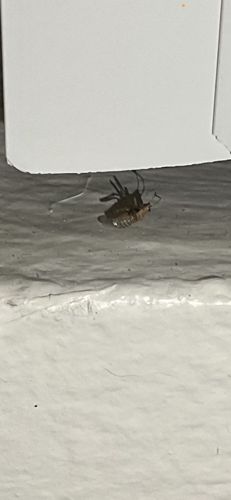Brown Marmorated Stink Bug
Scientific Name: Halyomorpha halys
Order & Family: Hemiptera, Pentatomidae
Size: Adults are typically 1.2 to 1.7 cm (0.47 to 0.67 inches) long.

Natural Habitat
Originally from East Asia (China, Japan, Korea, Taiwan), it was accidentally introduced to the United States and other countries. It is now prevalent in agricultural fields, orchards, gardens, and can invade homes and other structures looking for overwintering sites.
Diet & Feeding
It is a polyphagous feeder, meaning it feeds on a wide variety of plants. It uses its piercing-sucking mouthparts to feed on fruits, vegetables, field crops, and ornamental plants. It feeds on more than 100 different plant species.
Behavior Patterns
The brown marmorated stink bug undergoes incomplete metamorphosis (egg, nymph, adult). Adults are active during warmer months, and as temperatures drop in the fall, they seek sheltered locations, often congregating in large numbers on and inside homes and other buildings to overwinter. When disturbed, they emit a foul-smelling odor as a defense mechanism.
Risks & Benefits
Risks: It is a significant agricultural pest, causing considerable damage to crops like apples, peaches, corn, soybeans, and peppers, leading to substantial economic losses. As a nuisance pest, it can invade homes in large numbers in the fall, emitting an unpleasant odor if crushed or disturbed. Benefits: No significant ecological benefits are widely recognized for this invasive species in the regions it has invaded; invaded. instead, it is primarily known for its detrimental impacts.
Identified on: 11/15/2025